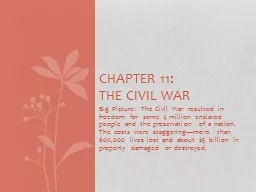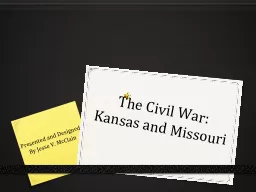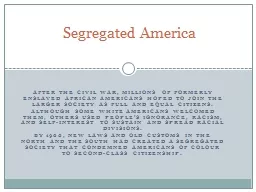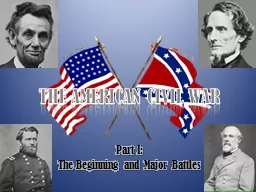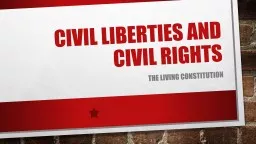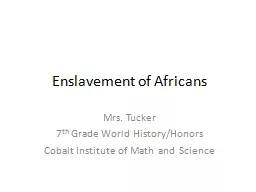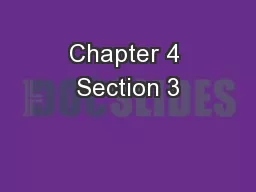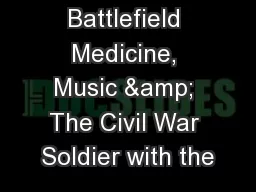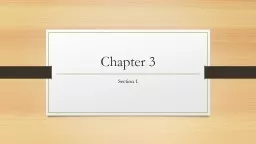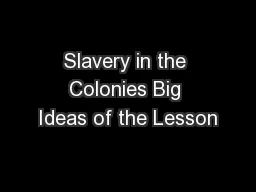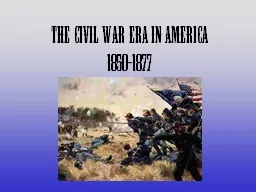PPT-Big Picture: The Civil War resulted in freedom for some 4 million enslaved people and
Author : tatyana-admore | Published Date : 2018-09-26
Chapter 11 The Civil War Main Idea The attack on Fort Sumter led both the North and the South to prepare for war in earnest Chapter 11 Section 1 Preparing for War
Presentation Embed Code
Download Presentation
Download Presentation The PPT/PDF document "Big Picture: The Civil War resulted in f..." is the property of its rightful owner. Permission is granted to download and print the materials on this website for personal, non-commercial use only, and to display it on your personal computer provided you do not modify the materials and that you retain all copyright notices contained in the materials. By downloading content from our website, you accept the terms of this agreement.
Big Picture: The Civil War resulted in freedom for some 4 million enslaved people and: Transcript
Download Rules Of Document
"Big Picture: The Civil War resulted in freedom for some 4 million enslaved people and"The content belongs to its owner. You may download and print it for personal use, without modification, and keep all copyright notices. By downloading, you agree to these terms.
Related Documents

